A Guide to Building Your Perfect House in France
Feature
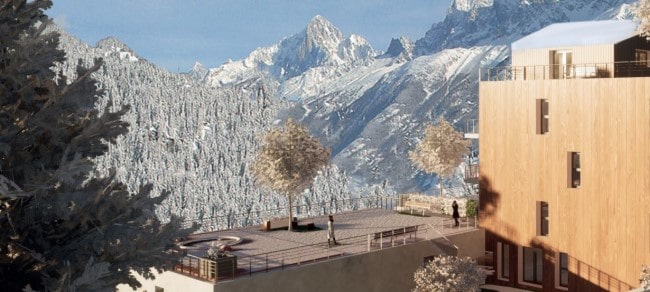

There are countless wonderful properties in France, and countless fantastic locations, but what if you cannot find your perfect place in your ideal location?
The answer could be to start from scratch, so you can choose exactly what you want. But just how straightforward is this process in France?
Whether you’re buying off-plan with a developer, or choosing a plot and organising a self-build, Annaliza Davis outlines what you need to know.
How to choose the right location in France
The average cost of property in France (not counting central Paris) is around €2,200 per square metre, but this figure changes dramatically depending on location. When choosing where to buy in France, here are some key factors to consider:
Transport and access
We’ve all heard about the importance of location when buying property, but this should include several considerations, such as proximity to cities, ferry ports, air, rail or road links. You might not feel that transport links are vital, but these factors can have a dramatic impact on the price and the potential resale value later.
For holiday homes, you’ll need easy access if you want to maximise the number of visits, while for a year-round property, you might need to be within easy reach of work opportunities.
The infrastructure of the location
With such a big investment, you must keep a clear head before you commit. Check the reality of local shops, schools, doctors and dentists and remember that a cottage in the middle of nowhere is not so idyllic when you’re ill or snowed in for weeks at a time.
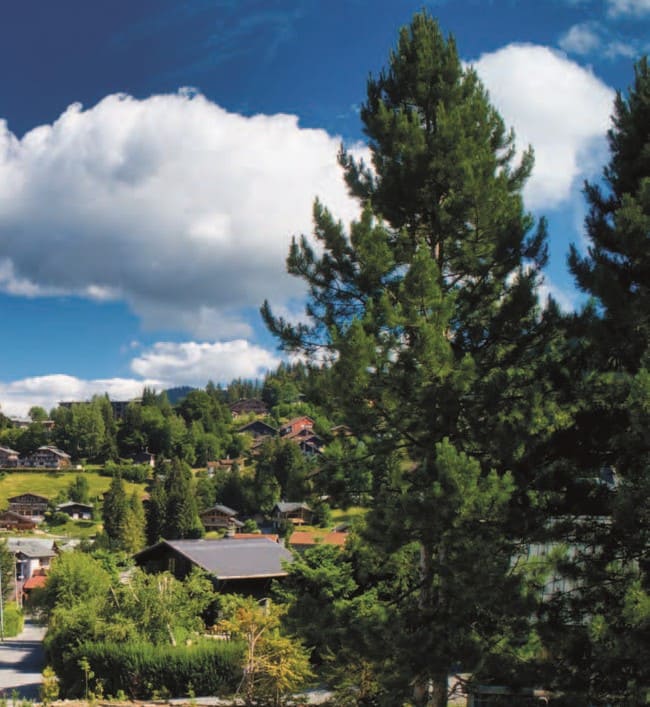
© Photo reposted from FrenchEntrée Magazine
Tourism
This is often overlooked when buyers are only considering their own personal situation. A location’s tourism potential becomes essential if you want the option of a property paying for itself later on: does the area attract a steady stream of visitors, is it well maintained, is it easy to get to? Some places will rent out all year round if they are in a good location with a high tourism draw.
Resale potential
When purchasing, even if you’re planning to buy your forever home, you should always think long-term. Consider all the points above from the viewpoint of a prospective buyer in the future: that nearby industrial estate or motorway junction might not bother you, but would it deter other buyers in the future?
Option 1: buy off-plan and ‘VEFA’ your way to your perfect French home
Buying a brand-new property has similar advantages to buying a new car, particularly when it comes to guarantees. The French talk about buying VEFA or vente en l’état futur d’achèvement, which means a sale of a property not yet fully completed, and this route has countless benefits for the buyer.
VEFA purchase costs are half that of older properties, you stagger payments as the build progresses and you have guarantees on soundproofing and insulation. With certain purchases, you can even modify the layout or choose the fittings and finishes of your home.
An overview of the off-plan process
- Choose your property, and get as much detailed information as possible
- Sign the reservation contract and pay a five per cent deposit
- You have one week to check the legal details and, if necessary, withdraw
- Sign the definitive contract
- Make the agreed payments as the build progresses
- Get the keys and check your guarantees
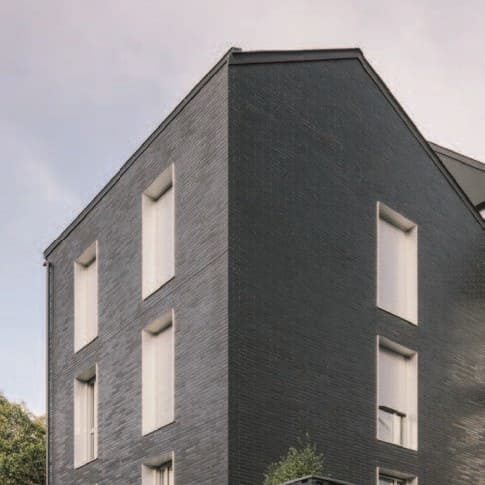
The Loheacs’ new-build property in Saint-Malo ©Photo reposted from FrenchEntrée Magazine
Types of off-plan properties
1. Leaseback options
A great option for foreign buyers is to invest in a property that offers leaseback arrangements. A management company handles the bookings, cleaning, reception and handovers, while you keep a fixed number of weeks for your own use.
Often, our first thought is seaside properties including complexes with pools and leisure parks, which have a perennial appeal, but your location will impact hugely on price. Buy near Biarritz or Cannes in the south and you’ll need around €5,000 per square metre, but there are variations even along the northern coast. The Parisian favourites of Deauville and Trouville cost between €6,000 and €10,000 per square metre, whereas in Saint-Malo you could pay as little as €2,700 per square metre and be close to the ferry ports for popping across.
In France, ski resorts are a reliable source of leaseback properties allowing you to cover part or all of your costs. Developers create a project to build several apartments of various values and sizes, and you reserve yours based on plans and perhaps a show apartment. For the top resorts, such as Méribel, you could invest a breath-taking €10,000 per square metre, but in Les Arcs this comes down to as little as €3,000 per square metre.
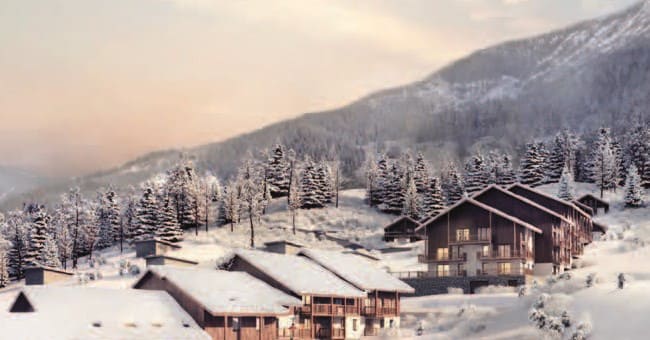
New developments in the skiing resort of Valmorel ©Photo reposted from FrenchEntrée Magazine
The prices can be extraordinary, but so are the potential returns, and when the organisation handles all your bookings and handovers, the management fees can be well worth it. If you’re considering this route, check there’s easy access for tourists and year-round activity in that resort.
If you’re based out of the country, it would be wise to favour a company that offers a fixed-period management contract, typically guaranteeing an income over the next ten years.
Take the resort of La Rosière (on the Italian border): here, you can choose one of 12 exclusive apartments starting at €510,000. Enjoy spectacular views, spa and gym facilities plus a rental management contract that enables you to reclaim 20 per cent VAT.
Alternatively, in La Plagne (between Grenoble and Mont Blanc), The White Pearl is a new five-star development complete with indoor pool, well-being centre, spa and gym, where one-bedroom apartments start at €203,333. The management company handles all the lettings, allowing you to earn from your investment.
2. Residential options
If you’re looking for your own home, why not buy an apartment in a new residential development? On the west coast of Brittany, you can buy south-facing, three bedroom apartments complete with balcony, parking space and garage for €165,000: a mere €2,000 per square metre. You might also see lotissements, which are small housing estates, generally sold as building plots but these occasionally come up to buy off-plan. French developments tend to encourage more architectural variation, so the results are less uniform than British estates. In Saint-Malo on the north coast of Brittany, three-bedroom townhouses are currently available off-plan for €358,000 (€3,250 per square metre).
3. Student lets and senior housing
Finally, if you’re serious about investment opportunities, there’s the option of student or senior housing, generally in areas where the government needs to develop the accommodation on offer. You can’t use the property yourself and you must commit to a minimum of nine years renting out, but there will be a constant source of tenants and, if you are resident in France, there are several fiscal
advantages. It’s possible to buy a studio flat of this type in vibrant Nantes from €80,000 or in Nice from €115,000.
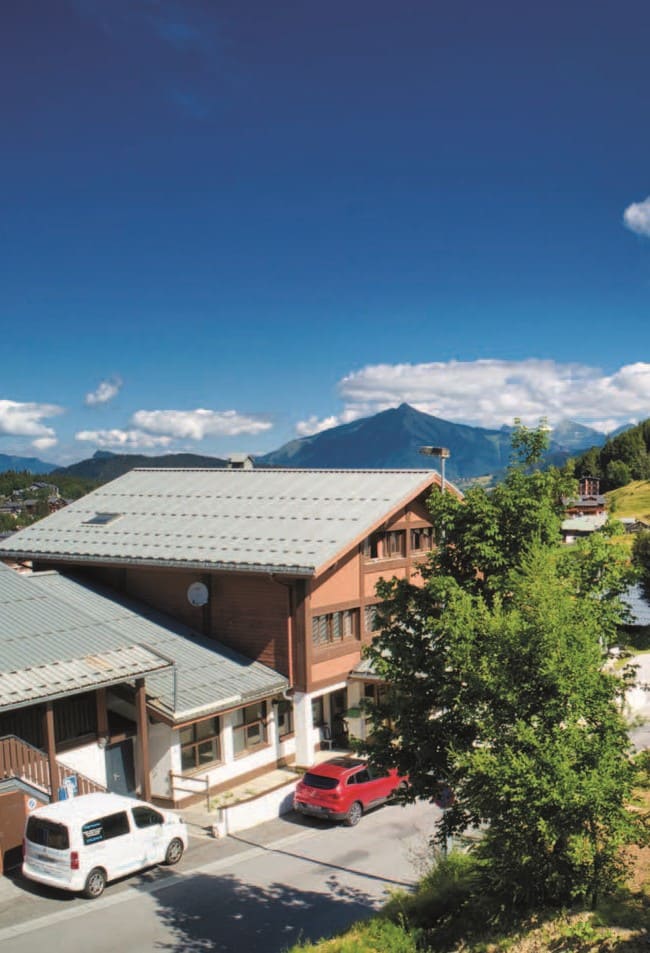
Le Grand Duc development in Les Carroz d’Arrâches ©Photo reposted from FrenchEntrée Magazine
What can you get for your budget?
Firstly, let’s look at properties currently available in coastal resorts. In southwest France, La Rochelle is a popular tourism area, and three-bedroom apartments are currently available off-plan for €283,000, a very reasonable €4,200 per square metre. A little further north, the resort of Saint-Jeande- Monts currently has new apartments planned for 2023 from €143,000, equating to €3,516 per square metre.
Next, the ski resorts. In the Alps, Le Grand Duc is a new development of 22 apartments in Les Carroz d’Arrâches (between Chamonix and Geneva) offering one-bedroom apartments from €300,000 complete with underground parking and ski locker and a five-minute walk to the ski lift.
Alternatively, head to the very chic Valmorel, east of Chambéry. Here you can invest in apartments starting at €189,000 offering ski-in, ski-out locations close to the resort, as well as a leaseback option where all the lettings are handled for you.
Professional Opinion: The International Realtor
Richard Deans of MyChaletFinder has worked in international property sales for over 20 years, and has helped countless people find the right off-plan property in France.
“There are numerous advantages to buying new-build properties,” he says, “not least that your notaire fees are around 2.5 percent as opposed to 6-8 percent! These developments have a dedicated notaire to ensure all required guarantees are in place, so you know the project will be completed according to specifications. A lot of buyers appreciate having the ability to pay in stages, too, not having to finance the full amount immediately.
“Perhaps the biggest advantage is the buildings guarantee – normally a 10-year buildings guarantee on structural and a three-year guarantee on internal – as this brings real peace of mind, avoiding the nasty surprises that sometimes come with buying older houses.”
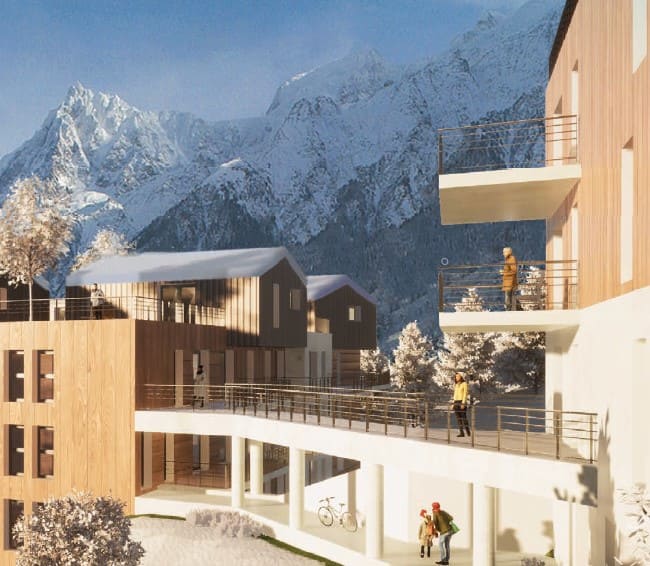
Les Mazots de Kayla in Les Houches is a ski-in development ©Photo reposted from FrenchEntrée Magazine
Case Study: A New-Build Apartment in Saint-Malo for A Couple’s First Home
When choosing their first home, Charlène Loheac and her partner decided to invest in a new-build apartment in Saint-Malo, north Brittany.
“We had a terrible experience with older properties when we were renting, everything from poor insulation to damp problems, so when it was time to invest in our own property, buying new with the various guarantees was an easy choice.
“Some people couldn’t understand why we were buying off-plan, it was like buying something that didn’t exist, but I actually felt I had more security. We chose an apartment that faced east-west to have the sun all day, we have two parking spaces, a balcony and brand-new appliances.
‘We are not DIY types at all, so it was good to just move in. The hardest part was being patient, but watching it take shape was an exciting time and I’d certainly recommend it.”
Conclusion: off-plan pros and cons
Buying off-plan is a great route for overseas buyers: you can do most of your research from home, you have guarantees on the quality of the build and costs are lower for purchase and the first years of ownership. Many buyers appreciate the clarity of a new-build, the simplicity of owning a place where everything is new and the potential income stream of letting it out.
On the downside, you’ll have less opportunity to make a profit than if you bought an older place to renovate, and you will probably find that the average room size is smaller, but if you prefer to buy without hidden surprises, this could be a good route for you.
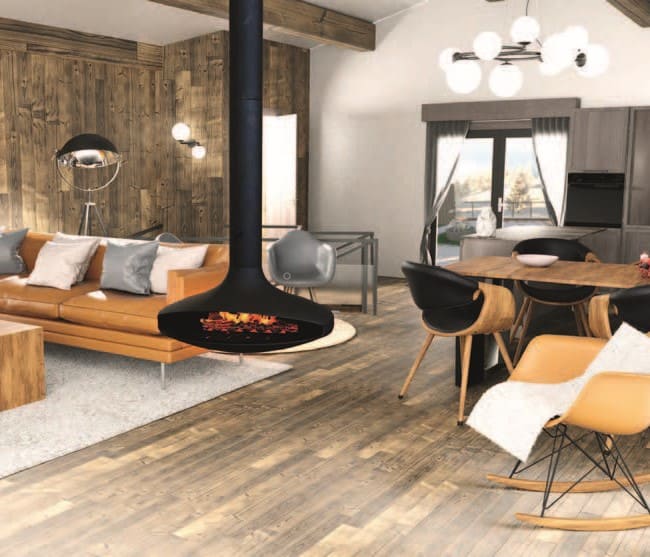
Les Mazots de Kayla in Les Houches ©Photo reposted from FrenchEntrée Magazine
Option 2: build from the ground up
Rather than buying off-plan, you could choose to find a plot and plan a build, either using a one-stop developer or contracting an architect and project-managing the construction.
Buying land for a self-build project
The UK and mainland France have a similar population of around 65 million, yet in the UK there are 275 people per square kilometre compared to just 105 per square kilometre in France. However, 30 per cent of all French residents are squeezed into only 13 per cent of the land area, either in Île-de-France (around Paris) or in Auvergne-Rhône-Alpes (the southeast around Lyon), so you can imagine the swathes of land that remain undeveloped around the country.
Types of plot and costs
When buying a building plot, the first thing to ensure is that you can indeed build on it! If you see TC or terrain constructible this is a plot suitable for construction.
Many cheaper plots in France are sold as ‘leisure land’ or terrain de loisirs, and on such a plot you can only put a non-permanent structure, such as a tent, shed camper or van. You’ll also need to look for the term viabilisé as this confirms that the plot is connected for water and electricity, usually sanitation and telephone as well. If you buy a plot that is non-viabilisé, you’ll need to allow between €3,000 and €15,000 to connect everything, depending on how far you are from existing connections.
As is often true, what seems to be a bargain initially can prove more costly long-term. If you’ve decided on the area where you want to build, flexibility could save you thousands. Lyon, for example, is notoriously expensive, and plots here (if you ever find one) start at €380 per square metre, but in nearby Saône-et-Loire, you pay just €30 per square metre. Even between one city and the next it can vary hugely: building plots in Quimper (west Brittany) average €100 per square metre, while its sister city of Nantes averages €440 per square metre.
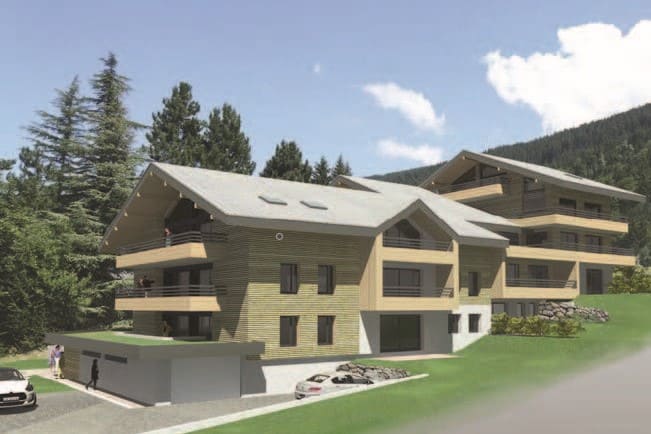
Le Grand Duc development in Les Carroz d’Arrâches ©Photo reposted from FrenchEntrée Magazine
Professional Opinion: The Architect
Having worked all over the world, architect Andrew Allen settled in northwest France in 2000 and continues to work on everything from conversions and renovations to new builds.
“As an architect, the main differences between the UK and France are in planning and administration. Here, if the total floor area of the project – new build or existing – totals over 150m², then a French-registered architect must make the planning application for you. There’s no fee to submit this application; you pay six to nine months after you receive planning consent, and the fee depends on the type and size of the project.
“Another difference is that building regulation for domestic buildings is self-regulated, meaning that each artisan is responsible for ensuring that their work conforms to the current regulations (DTUs in France) and they must carry a ten-year guarantee on their work.
“One thing that British buyers don’t always realise is how planning rules are very localised: don’t take it for granted that you will be able to carry out building work just because someone nearby has done something similar!”
Key Advice
- Make sure that your property is adequately insured
- Ensure that the tradesmen you use have the relevant insurances and guarantees
- Be realistic about budgets and margins: although French prices for property and building plots can be a lot lower than in the UK, the cost of building isn’t!
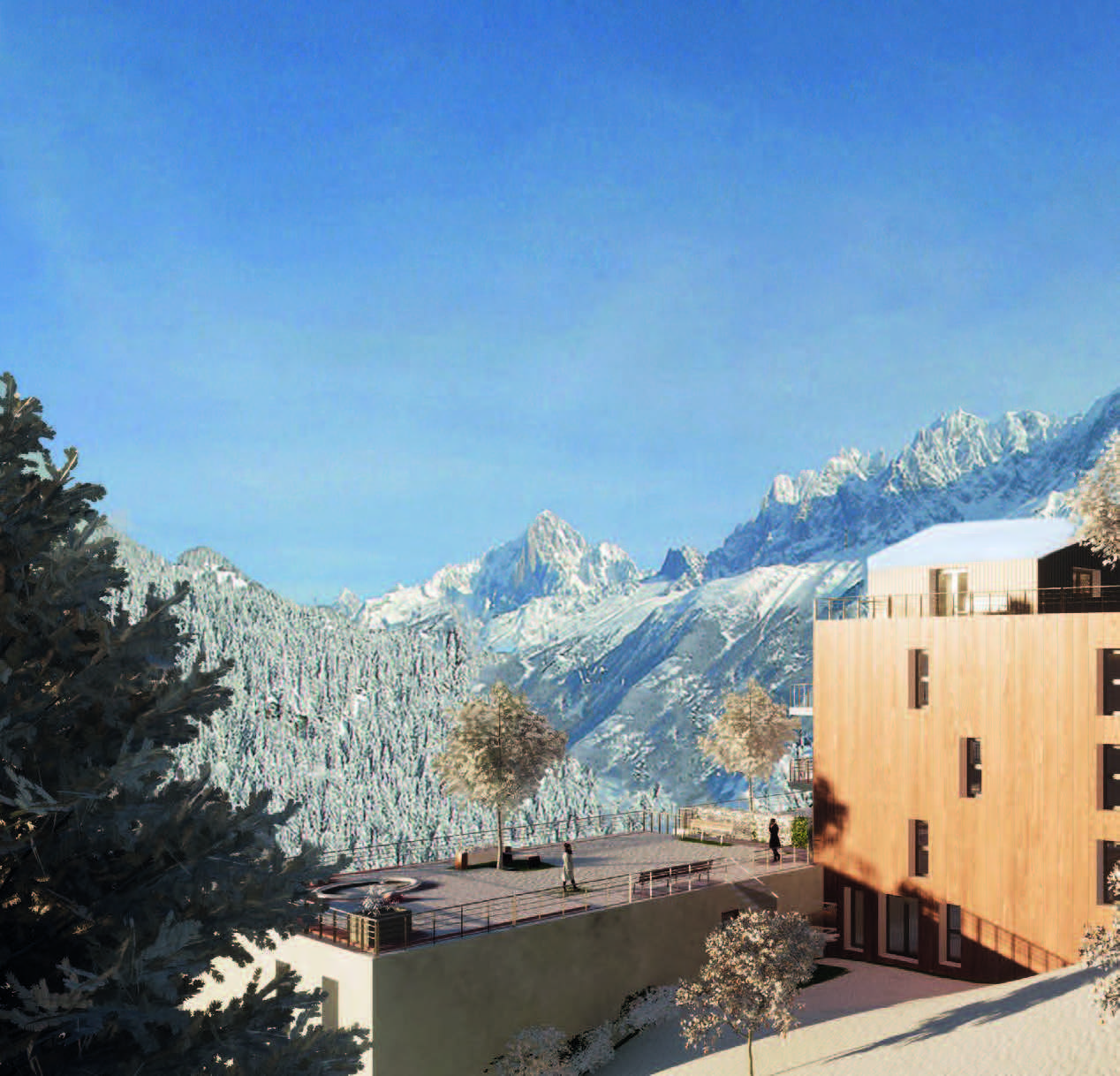
Les Mazots de Kayla in Les Houches ©Photo reposted from FrenchEntrée Magazine
Case Study: A Family’s Experience of Building From Scratch in France
Adèle Abel moved to France with her husband and daughter in 2004 to start a tourism business.
“After two years of renting, we decided to buy a plot and build our own home using a developer who specialised in wooden houses. It only took about a year, but the process was tricky because we were learning as we went along.
“To anyone else considering a self-build project in France, I’d advise that you use a construction company to handle everything, and get to know your local mayor as they have a lot of influence. It might not have been the simplest option, but it didn’t put us off: we’ll be moving in the next couple of years and we are considering another self-build, this time with a lot more knowledge!”
Conclusion: self-build pros and cons
When building your own home, you choose the plot, you get to decide exactly the type of home you want and make it happen. Thanks to French law, each builder must supply guarantees for their work, so you have reassurance.
However, you are still bound by local planning restrictions, so you don’t have total freedom, and self-builds in France are not necessarily cheaper than buying an existing house. If you’ve got the patience, the language skills and the right contacts, self-build can be a great option, but you need to be available to oversee the project.
Looking to create your perfect home in France?
Excited for a home that caters to all your needs? Having more clarity on the ways to create your perfect house in France, do you feel this would be the option for your next investment? If so, check out our new build properties for sale in France, or give our property team a call on +44 (0)203 773 2824 – it could be the start of your new life in France!
Lead photo credit : Stunning new build Les Mazots de Kayla in Les Houches is a ski-in development just 10 minutes from Chamonix (C) UNKNOWN
Share to: Facebook Twitter LinkedIn Email
More in french property, New build, off-plan, Property search, Self-build
By FrenchEntrée
Leave a reply
Your email address will not be published. Required fields are marked *



